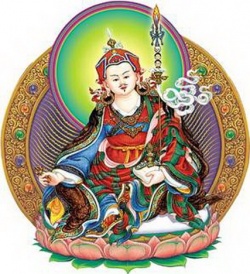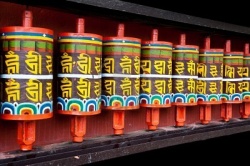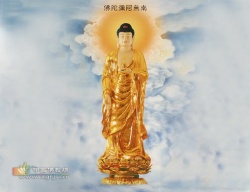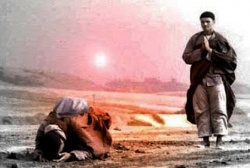Kriya Tantra
Kriya ; Kiriya ; Kriya tantra (Skt. kriyātantra; Tib. བྱ་རྒྱུད་, ja gyü, Wyl. bya rgyud) — the first of the three outer classes of tantra
and the fourth yana according to the nine yana classification. Kriya Tantra: There are many Kriya Tantra texts. At the moment I'm
working on compiling a list of those included in the Chinese/Japanese Tripitaka. For now here are some of the major Kriya Tantra texts:
Susiddhikara tantra 蘇悉地羯羅經 893, Subāhuparipṛcchā-tantra 蘇婆呼童子請問經 895妙臂菩薩問經 896, Sarvamandalasamanyavidhi-guhya tantra 蕤呬耶經 897, and the Dhyanottarapatalakrama.
The kriya tantras, or ‘action’ tantras, are so-called because they are concerned mainly with external conduct, the practices of ritual purification and cleanliness and so on.
Entry Point
The initial point of entry to the path of secret mantra vajrayana is ripening empowerment, so here one receives the water empowerment, which establishes the potential for ripening into the dharmakaya, and the crown empowerment, which establishes the potential for ripening into
the rupakaya. Then one keeps the general samayas of the kriya yoga as they are explained in the particular texts themselves. View
In terms of determining the view, the basis of the path, one realizes that the ground of purification, the nature of mind itself, is the wisdom of empty clarity, and is ultimately beyond all extremes of elaboration, such as existing, not existing, appearing or being
empty. Then one views the aspects of relative appearance, which are what must be purified, as the characteristics of the completely pure deity.
As for the path and the way of practising meditationt centres around the four realities: the reality of oneself and the reality of the deity are practised by means of the six aspects of the deity, by visualizing oneself as the samaya form (Skt. samayasattva) and then
invoking the wisdom being (Skt. jñānasattva) into the space in front, considering oneself as a servant and the deity as one’s master. One then focuses upon the reality of the mantra recitation which is the sound, and on the mind and the ground, and meditates upon the
reality of concentrationh consists of remaining in the ‘flame,’ continuation of sound and culmination of sound. Conduct
One performs the three kinds of ritual purification, changes the three types of clothing, adopts a diet of the three white foods and practices ritual fasting and mantra recitation. Results
In the short term, one becomes a desire realm vidyadhara, and ultimately one attains awakening as Vajradhara of one of the [[three buddha
families]]: of the family of enlightened body, of the family of enlightened speech, Amitabha, or of the family of enlightened mind, Akshobhya.
Although the practitioner has gained some understanding of absolute truth, in the realm of relative truth he still seeks accomplishment as something to be gained from outside. Kriya tantra practice or tantra of activity emphasizes ritual cleanliness: cleanness of the
mandala and the sacred substances, as well as the cleanliness of the practitioner who performs ablutions, changes clothes three times a day, and eats the three white and the three sweet foods. (milk, curd, butter, sugar, honey, and molasses).
View: The view is based on the two truths. Absolute truth is the wisdom of the mind’s ultimate nature that is pure, luminous, and void. It is free of the four limiting concepts: existence, nonexistence, appearance, and
emptiness. Relative truth may be viewed in two ways. According to the Madhyamaka it is completely fictitious; according to the view of the tantras, since phenomena are perceived as constituting the mandala of enlightened deities, relative truth is naturally perfect.
Meditation: The practitioner usually visualizes himself in his ordinary form. He regards the deity that is the object of meditation
as a lord and requests to be granted siddhi in the same way as a servant or subject would supplicate a master. The contemplation of absolute truth, without any specific object of focus, is also practiced.
Action: Action focuses on cleanliness, concentration, and mantra recitation.
Fruit: Realization of the Three Kayas and Five Wisdoms of perfect buddhahood is attained in seven human lifetimes.
Nyung-nä is a yidam practice of the Kriya tantra tradition and is able to purify negative karma in a very short time. It is said that the pure practice of a single Nyung-nä closes the doors to a low rebirth and that the completion of eight Nyung-näs leads to rebirth in the
pure land of Dewachen. Nyung-nä is a fasting practice of the Thousand-Armed Chenrezig: there are three daily sessions. On the first day one
eats a single solid meal (no black food: no meat, no eggs, no onions, garlic, radishes, leech, chives, no beans or peas), on the second day there is a complete fast with neither food nor drinks. During the two-day ritual one takes the eight Mahayana precepts. The participants refrain from
1) killing
2) stealing
3) lying
4) sexual activities (celibacy)
5) drinking alcohol, taking drugs or smoking cigarettes
6) using perfumes, wearing make-up or ornaments, entertainments such as singing, playing music, dancing etc.
7) eating at inappropriate times
8) sitting on high seats.
IAccording to a text belonging to the Kriya tantra, the Amogha Pasha: the detailed ritual of Amogha Pasha. Alcohol, meat, garlic, wild garlic, leek--alone or mixed with other food--should be especially shunned. And: Those who wish to keep the precepts must abstain completely from
alcohol, meat, onion, leeks, and the remnants of the offerings to the gods.
</poem>



